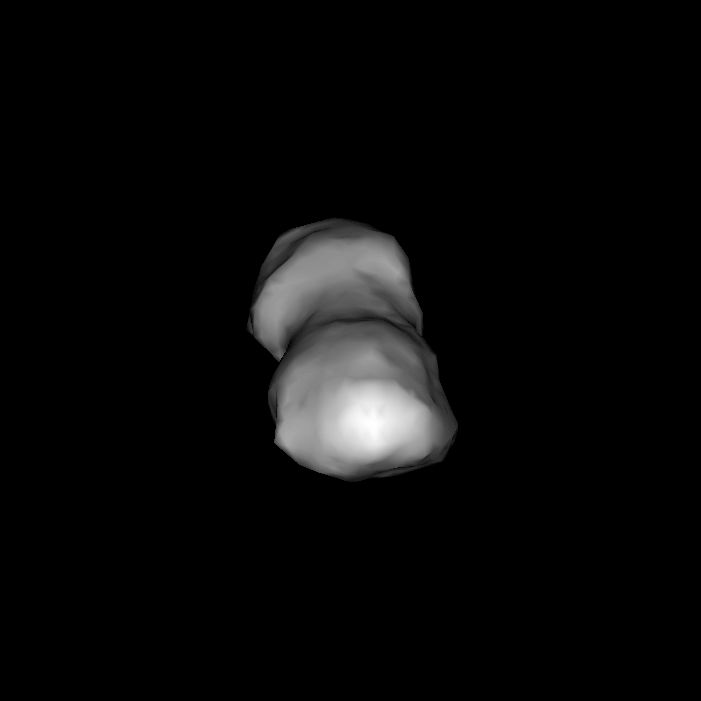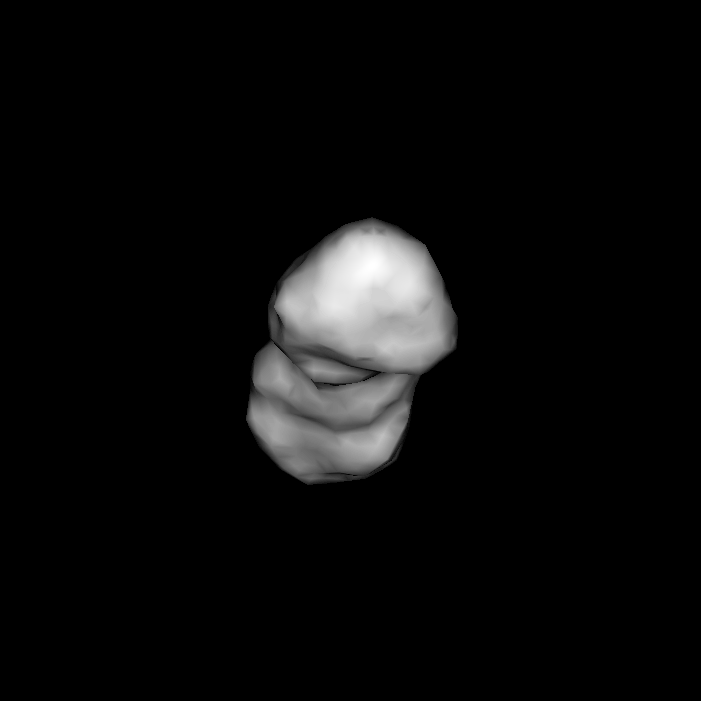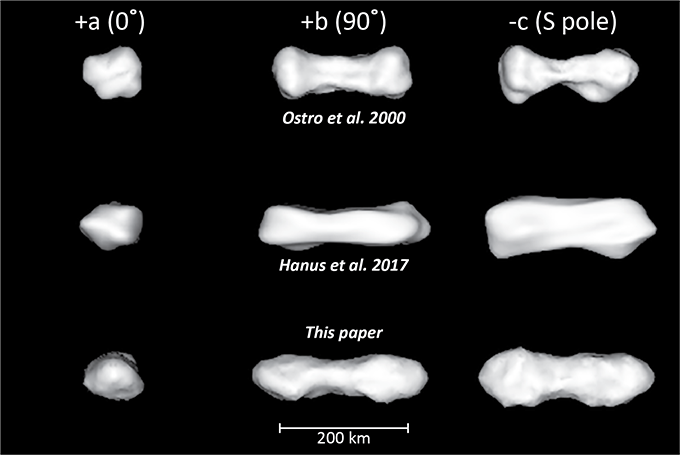

Here is the paper
Below is a comparison of the original Ostro et al (2000) model, a more recent model by Hanus et al. (2017) based on light-curves and AO, and ours.

Asteroid (216) Kleopatra - The "Dog Bone" or "Dumbell"
A Little Background...
Asteroid (216) Kleopatra was first discovered in 1880 and is one of the largest M-class asteroids in the solar system. M-class asteroids are thought to be dominated by metal (chiefly iron and nickel, Fe/Ni), but only about 40% of those surveyed by radar appear to have this characteristic (see my work on XME-asteroids). Kleopatra is one of those that radar confirms to be dominated by metal.
Kleopatra was one of the first asteroids for which radar echoes were used to generate a shape model (Ostro et al. 2000, Science). It's unusual shape (a so-called "dog-bone") generated a lot of interest for here was a possible binary or contact binary asteroid that appeared to be made primarily of nickel-iron. Perhaps even more intriguing, in 2008 observers discovered two moons orbiting this bizarre world (Descamps et al. 2011, Icarus). They have since been named Alexhelios and Cleoselene after the two children of the historical Cleopatra.
We took the results of several years worth of new radar observations, adaptive optics (AO) observations, and stellar occultations to refine the shape model of Kleopatra.
Here's a nice article about it by Phil Plait for his Bad Astronomy blog.
NORTHERN HEMISPHERE SOUTHERN HEMISPHERE


Here is the paper
Below is a comparison of the original Ostro et al (2000) model, a more recent model by Hanus et al. (2017) based on light-curves and AO, and ours.
